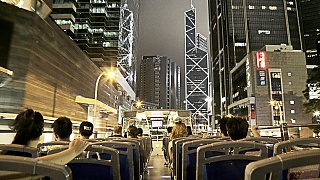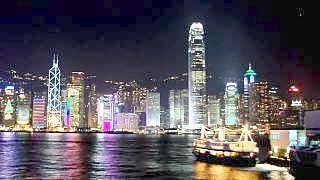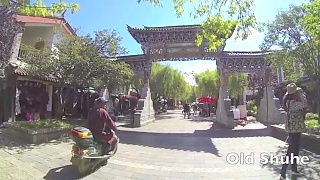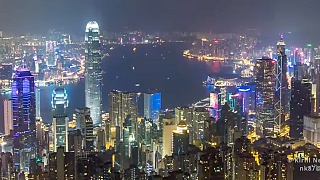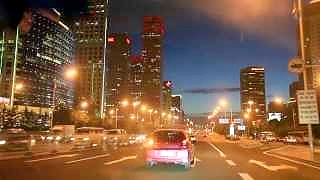Welcome to Hong Kong!
Explore the vibrant city of Hong Kong, where East meets West in a dazzling fusion of culture, cuisine, and modernity. From towering skyscrapers to tranquil islands, Hong Kong offers a captivating experience.
About Hong Kong
Hong Kong is a dynamic city known for its stunning skyline, bustling street markets, and picturesque harbor. As a Special Administrative Region of China, Hong Kong has its own unique blend of Chinese and Western influences.
Key features of Hong Kong include its vibrant nightlife, world-class dining scene, and diverse shopping options.
Top Attractions
- Victoria Peak: Ride the Peak Tram for panoramic views of Hong Kong's skyline.
- Star Ferry: Take a scenic ride across Victoria Harbour between Hong Kong Island and Kowloon.
- Ngong Ping 360: Visit Lantau Island and see the Tian Tan Buddha statue.
- Temple Street Night Market: Explore this lively market for street food, souvenirs, and bargain shopping.
- Victoria Harbour Light Show: Watch the Symphony of Lights show illuminating Hong Kong's skyscrapers.
- Ocean Park: Enjoy thrilling rides and see marine life at this popular amusement park.
- Stanley Market: Visit this waterfront market for arts, crafts, and seaside dining.
- Wong Tai Sin Temple: Experience traditional Chinese architecture and visit a popular Taoist temple.
- Hong Kong Disneyland: Discover magical attractions and meet Disney characters.
Culture and History
Hong Kong's culture is a blend of ancient traditions and modern influences.
- Chinese Festivals: Experience traditional festivals like Chinese New Year and Mid-Autumn Festival.
- Colonial Heritage: Explore historic sites such as the Former British Consulate and Western District Public Cargo Working Area.
- Lamma Island: Escape to this laid-back island with hiking trails and seafood restaurants.
- Hong Kong Heritage Museum: Learn about the city's history, art, and culture through exhibitions.
Dining in Hong Kong
Hong Kong is a food lover's paradise, offering a wide range of culinary delights.
- Dim Sum: Enjoy traditional Cantonese dumplings and tea at famous dim sum restaurants.
- Street Food: Try local favorites like egg waffles, fish balls, and roast meat on rice.
- Seafood: Feast on fresh seafood at fishing villages like Sai Kung or Lei Yue Mun.
- Michelin-Starred Dining: Indulge in gourmet cuisine at acclaimed restaurants around the city.
Shopping in Hong Kong
Explore Hong Kong's diverse shopping scene, from luxury boutiques to bustling street markets.
- Causeway Bay: Shop for international brands and designer labels in this vibrant shopping district.
- Mong Kok: Browse through markets like Ladies' Market and Sneakers Street for trendy fashion and accessories.
- Central District: Discover upscale shopping malls and department stores in Hong Kong's financial hub.
- Stanley Village: Find unique gifts, home decor, and clothing at this waterfront market.
Getting Around Hong Kong
Explore Hong Kong's efficient transportation network to navigate the city and its surrounding areas.
- MTR (Mass Transit Railway): Use the extensive subway system to reach major attractions and districts.
- Star Ferry: Take a scenic ferry ride across Victoria Harbour between Hong Kong Island and Kowloon.
- Trams: Ride the iconic double-decker trams for a leisurely tour of Hong Kong Island.
- Buses and Minibuses: Use public buses or minibus services for convenient transportation.
- Taxis and Ride-Hailing: Hail taxis or use ride-hailing apps like Uber for quick trips.
Where to Stay in Hong Kong
Choose from a variety of accommodations in Hong Kong, ranging from luxury hotels to budget-friendly guesthouses.
- Luxury Hotels: Experience world-class hospitality at luxury hotels in Central, Tsim Sha Tsui, or Causeway Bay.
- Boutique Hotels: Stay in stylish boutique hotels offering personalized services and unique designs.
- Hostels and Guesthouses: Budget-friendly options with shared facilities, ideal for backpackers and solo travelers.
- Serviced Apartments: Rent furnished apartments for extended stays and added convenience.
Practical Tips for Visitors
- Best Time to Visit: Visit in autumn (October to December) for pleasant weather and clear skies.
- Language: English and Cantonese are widely spoken; use basic phrases for communication.
- Currency: Use Hong Kong Dollars (HKD); major credit cards accepted in most establishments.
- Etiquette: Respect local customs and traditions; queue patiently and avoid loud behavior in public.
- Safety: Hong Kong is generally safe, but be cautious in crowded areas and watch for traffic.
- Internet Access: Stay connected with free Wi-Fi available in public areas and cafes.
Enjoy Your Trip to Hong Kong!
Get ready for an unforgettable journey in Hong Kong, where every corner reveals something new and exciting. Whether you're exploring iconic landmarks or savoring delicious street food, Hong Kong promises an enriching travel experience.
 Hong Kong City Guide
Hong Kong City Guide
